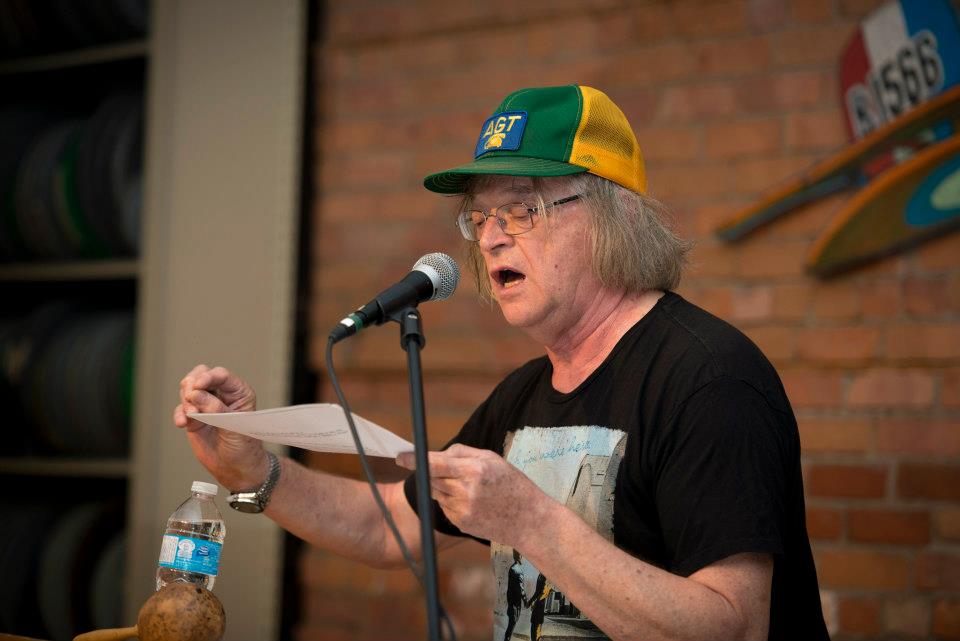By Nadine Moedt (The Cascade) – Email
Print Edition: June 4, 2014

Carl Peters gave a lecture on “subverting the bureaucracy” at the Reach last Thursday, one of two lectures analyzing the art of Canadian poet bill bissett.
The event took place amid a display of bissett’s many confrontational paintings, curated by Peters.
Despite bissett’s huge presence in modern Canadian literature, there has been very little published academic dialogue on his work, with the exception of Carl Peters’ book Textual Vishyuns: image and text in the work of bill bissett. It was a book that, according to Peters, took five years to plan and a decade to write.
The lecture ranged in topics of discussion, seeming to imitate the dream logic followed in the films featured while exploring bissett’s inspirations.
After a brief introduction and lecture, Peters played Un Chien Andalou, a 1929 Luis Buñuel film. The film uses dream logic, moving from scene to scene with Freudian overtones; in its first scene, an eye is dramatically sliced open to draw attention to the act of watching a film; a man drags pianos, upon which are piled two dead donkeys, priests, and the tablets of the Ten Commandments to represent the weight of traditions in art, commerce, and religion; a man tries to grasp at the back of a Diana figure in a classical pose and falls while she ignores him in a display of the weakened male grasp of artistic narrative.
Other surrealist images are less easily translated. A woman’s underarm hair melts into a sea urchin and then is placed on a man’s mouth; a dismembered hand is prodded with a cane; and ants nest in the skin of a man’s palm.
Like bissett, Buñuel’s purpose was to upset convention, or in his words, to “explode the social order.” He also said of his 1929 film that he “would be sorry if it pleased you.” Buñuel would be happy, then, to hear that it didn’t. But while it may have been difficult to watch, the film made for interesting discussion material.
Later Peters played a short film by bissett entitled Embrace; Peters commented it was by “an artist who also likes to slice eyeballs.”
This was not such a pleasure to watch, consisting of bissett’s paintings paired with barely audible, slurred speech, Cetacean singing, didgeridoo calling and gleeful laughing. Poems passed too quickly to read.
Like Buñuel’s film, it appealed to the unconscious and brought out the motion in the background of bissett’s paintings. The confrontational style works to “subvert the bureaucracy,” Peters said.
Buñuel and bissett’s similarly aligned purpose is to “make dissent unreadable,” according to Peters. The dominant class can anticipate and diffuse the radical effect of protest conventions, marches, pickets, petitions, and civil disobedience, but cannot dismantle the explosive acts of subversion embedded in such art.
“Bill bissett single-handedly goes about displacing every convention,” Peters said.
Part two of the series will take place on Thursday, June 5 at the Reach.


